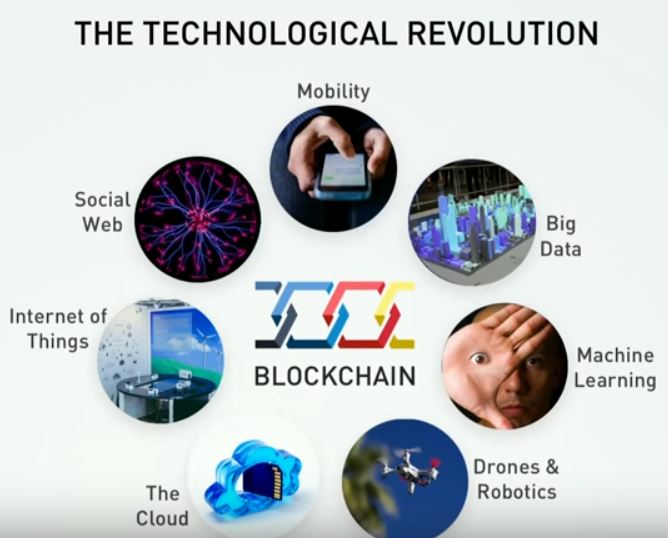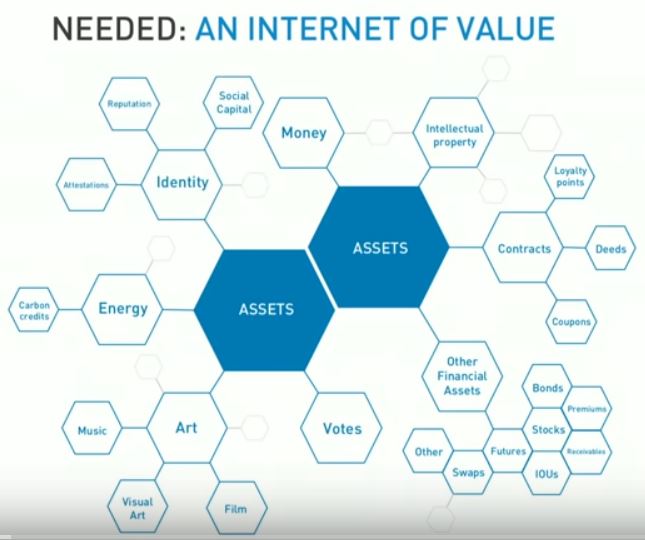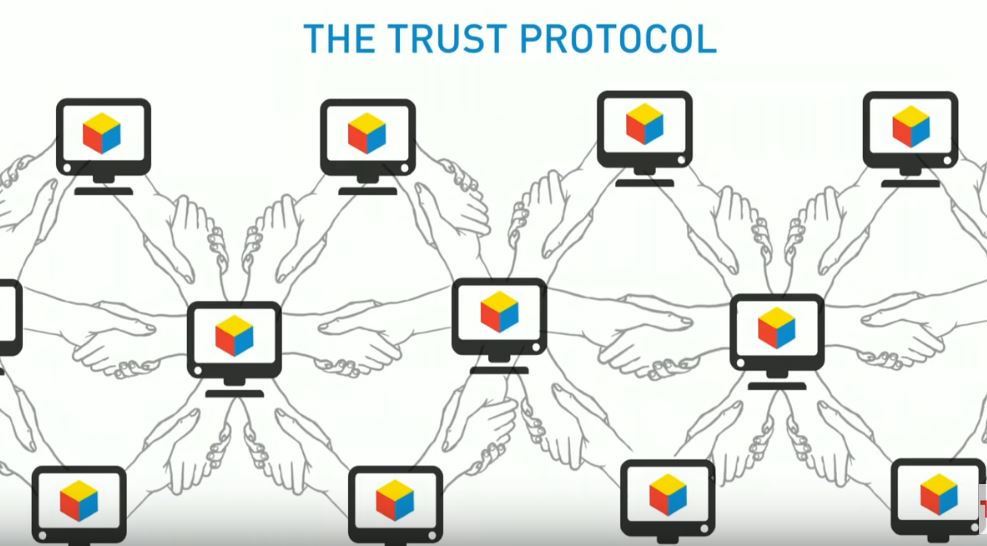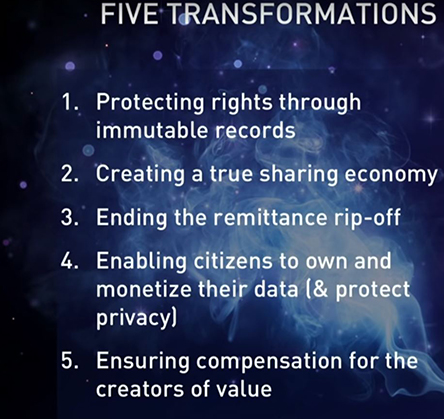Blockchain ledger in digital commerce
A blockchain is a decentralized distributed ledger-data-base & data-driven technology that maintains a continuously-growing list of transaction records, called blocks, stored on thousands of computers globally. Each block contains a time-stamp and a link to a previous block. This prevents multiple-spending of the same digital currency.
It allows for:
- better feedback loops,
- greater accountability,
- decreased transaction costs.
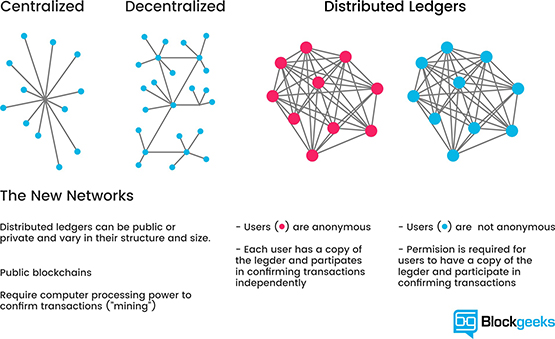
This way blockchains are inherently resistant to modification of the data, once recorded. Now in use with crypto currency transactions, royalty collection, and management of copyrights around the world, etc.
In this “Internet of finance”, blockchain provides the digital ledger that enables transfer of crypted assets more quickly, reliably and securely, using certain algorithms.
Blockchain elevates security through cryptography and a tamper-resistant design, while eliminating the risk of a single point of failure. If a breach does occur, its location can be determined and isolated, precisely and quickly.
Blockchain security methods include the use of public-key (a long, randomly-generated string of numbers) cryptography which is an address on the blockchain.
Crypto currencies sent across the network are recorded as belonging to that address. A private-key is like a password that gives its owner access to their digital assets and interact with the various capabilities that blockchains now support.
Then, is data stored on the blockchain incorruptible?
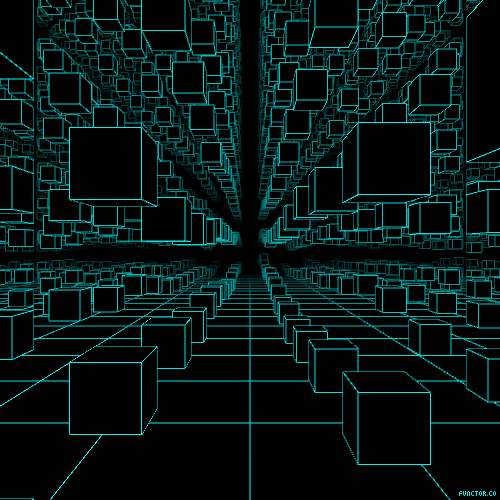
Marketable, valuable assets backed crypto currencies may become the safest means of exchange in the future. Digital coins issued by those assets backed enterprises or groups of enterprises may become some of the most secure currencies. Their intrinsic value is then directly related to the publicly traded stock value of those enterprises.
Bumble Bee customers now will be able to readily access the complete origin and history of the company's yellowfin tuna products by using their smartphones to scan a QR code on the product package. This leads SAP's blockchain platform to display information about the fish-to-market journey, including the size of the catch, point of capture and the fishing community that caught it, as well as valuable insights to verify authenticity, freshness, safety, fair trade fishing certification and sustainability.

Blockchain technology could be used to curb bio-piracy and the plundering of the rainforest’s rich resources. Bio-pirates are corrupt entities that take biological resources from rich places like the Amazon and make their fortunes of these resources. The countries of origin are left with both depleted resources, environmental issues, and no share in the gains.
To fulfill this great need for preservation and control over the economic value of natural assets, the Amazon Bank of Codes initiative was formed. It is a collaboration between the World Economic Forum, the Earth Bank of Codes and the Earth Biogenome Project.
Their aim is to assign and classify biological data from every species of plant and animal in the Amazon Basin, logging their genetic sequences on the blockchain. Registering these assets on the blockchain makes it possible to record and track these resources’ provenance and use. It would thus be possible to trace where these resources go and create a platform for the fair sharing of the benefits with the country of origin.
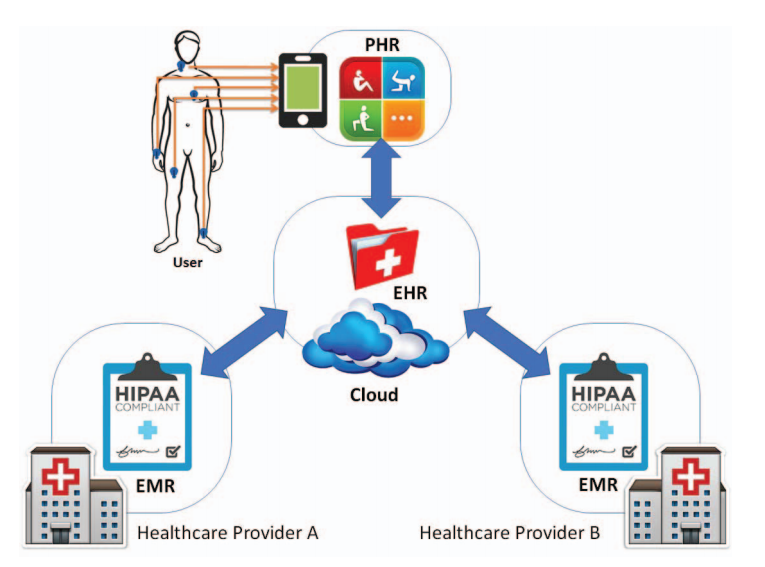
Blockchain for your medical and health records: A conceptual cloud-based ecosystem for electronic medical and health records (EMR/EHR) and personal health records (PHR).
5 transformations for a prosperous world !

